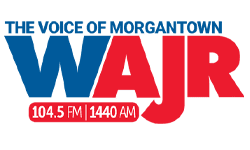Morgantown, W.Va. – During meetings of the West Virginia Municipal League in Morgantown, officials were able to share challenges and success stories of American Rescue Plan spending.
The American Rescue Plan was passed into law in March of 2021 and sent $4 billion to West Virginia over the next two years. Of that sum, cities and counties shared more than $2 billion.
West Virginia Municipal League president and Barboursville mayor Chris Tatum, said the disbursement of the first tranche of relief money demonstrates the law is filling the intended purpose.
“Rescue plan funding has been super important- one, to keep cities whole, but also to advance those projects that might have not been able to have been done otherwise,” Tatum said.
Barboursville received about $1.4 million and used a portion for the completion of an important sewer project. The 12 acre lagoon system is being rerouted to the Pea Ridge Public Service Department. When complete, the 12 acre area will be repurposed for economic development.
The city of Wheeling received a total of $28.5 million, or about equal to an entire annual budget. Mayor Glenn Elliott said the challenge has been prioritizing requests from community organizations, needs within city departments and infrastructure projects. Elliot explained one-third of the first tranche has been allocated.
“The bill does specify water and sewer infrastructure projects as eligible and we have a lot of needs in that regard like most cities across the state,” Elliott said. “So, we’re looking at it from across the board, we’ve probably allocated one-third of our money so far, but we really have a lot left being cued up for discussion.”
Elliott said the one-time influx of cash has provided opportunities to complete improvements and upgrades much faster outside the normal budget process. So, city leaders are evaluating requests and projects to maximize the value of every relief dollar.
“Our goal is to make that money multiply, so we’re making investments that are going to come back in years to come, not just fixing things that are going to have a one time impact,” Elliott said. ” So, that’s what we’re trying to focus on, but it’s harder to do than you might think.”
Parkersburg received about $22.4 and mayor Tom Joyce was able to quickly initiate a long needed public utility project and invest a substantial amount of the first installment.
“We had a water project that was engineered and ready to go, so we invested the first tranche of $11 million, about $8 million of that went to water and sewer infrastructure.”
Joyce said the money presents opportunities to address quality of life issues that will benefit neighborhoods for many years to come. City leaders are actively accepting public comment on projects.
“We’re working right now through some public comment on doing some exciting things in the next round,” Joyce said. “Hopefully, we’ll be announcing soon a major rehabilitation to our large baseball field in Parkersburg City Park- Bennett Stump Field.”


